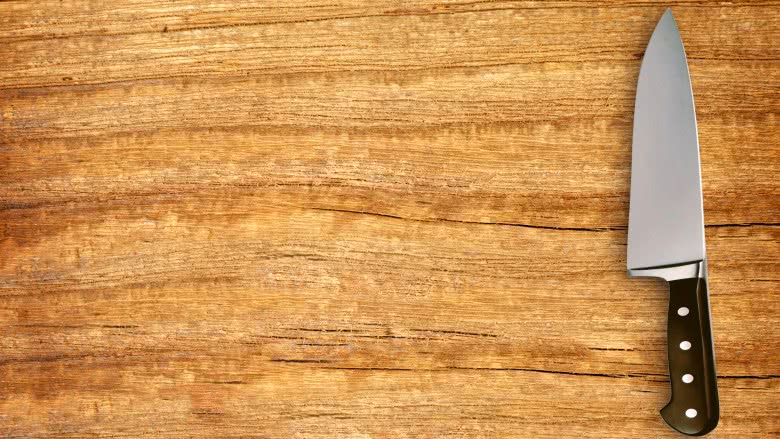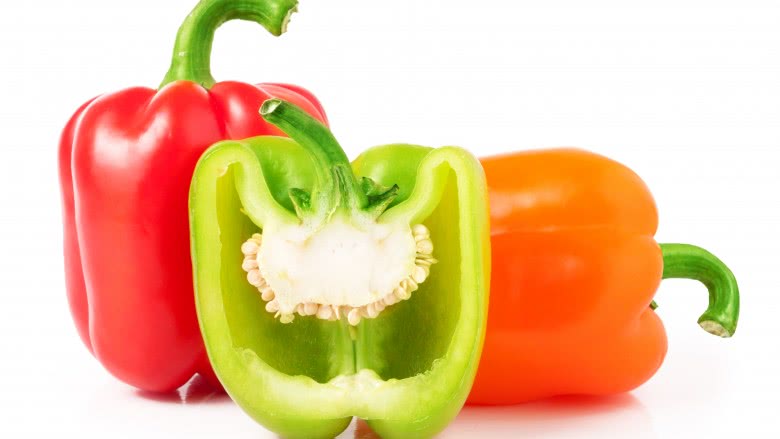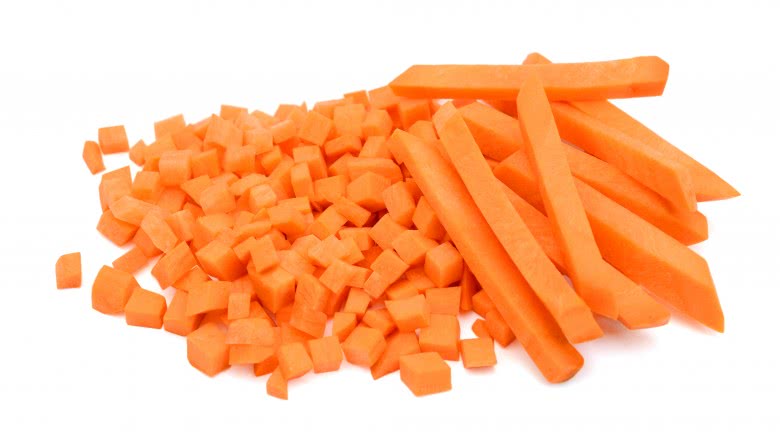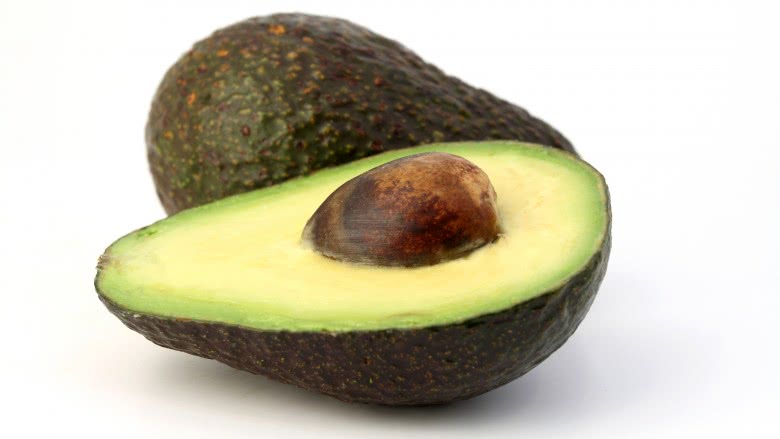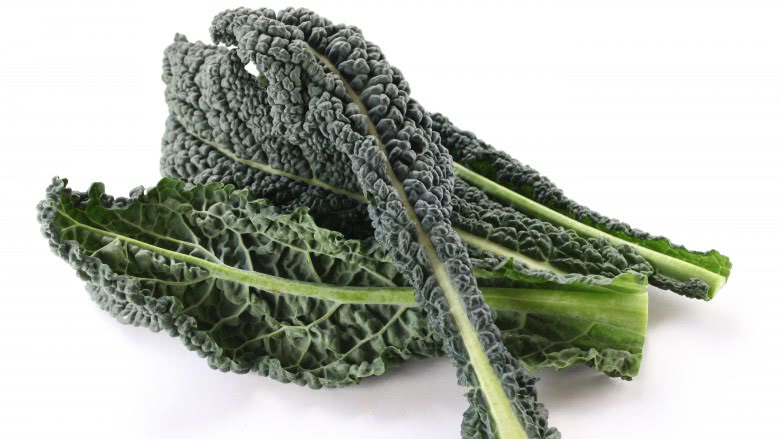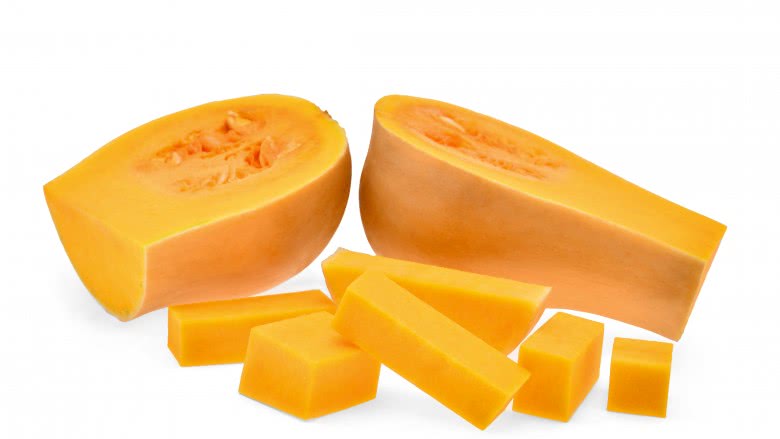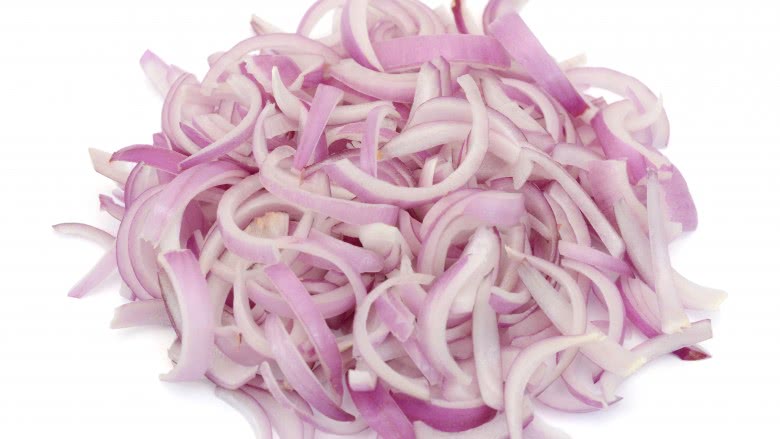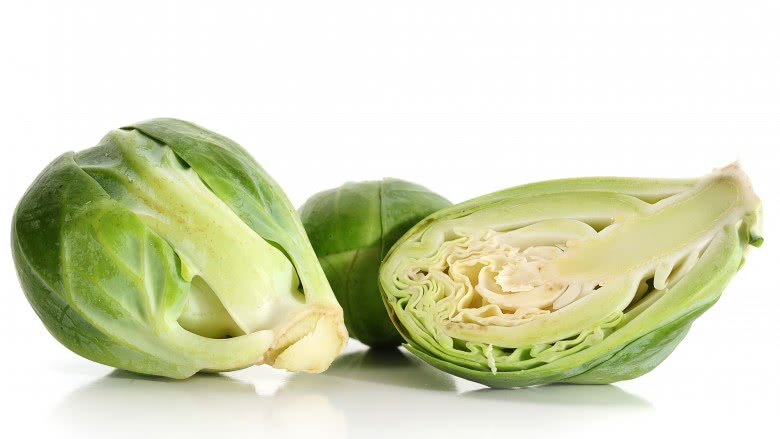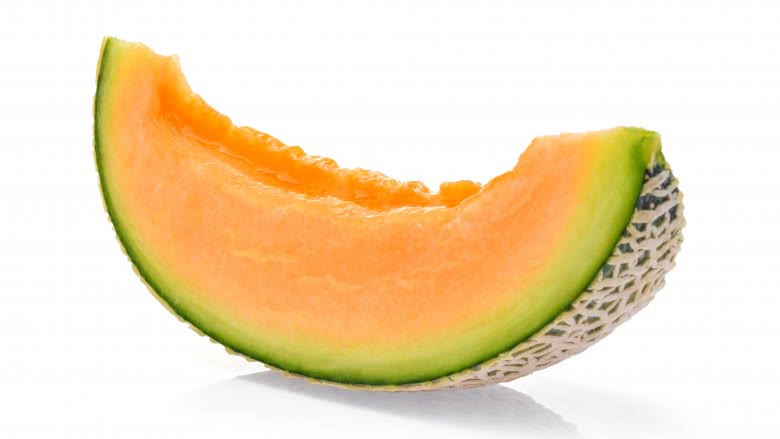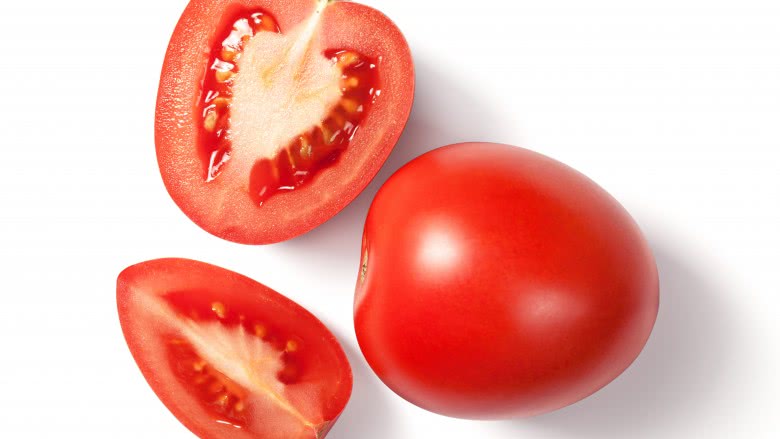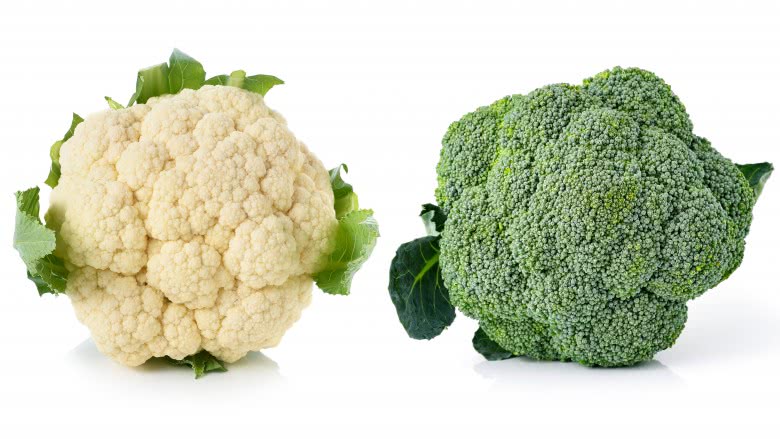The Best Ways To Cut Produce
If you would've asked me five years ago the best way to cut up a Kabocha squash, I would've said, "Kobocha whah?" But when you quit your desk job as an advertising copywriter to pursue your dream of becoming a health and wellness chef, you sharpen your vegetable-chopping skills pretty fast.
I think most home chefs have a lack of confidence when it comes to "the right way" to cut things because they were never formally taught. Either they lifted the technique from watching Mom in the kitchen or they just took a knife to a carrot and chopped it up the best way they could. But before I tell you "the right way," I believe there is no "wrong way." As long as your dish tastes good and you're not cutting your fingers off, you're doing right in my book just by making the effort to cook. If you absolutely must know the proper way, then roll up your sleeves, sharpen your chef's knife, and let's get started.
Chefly advice
The key to chopping any vegetable is prep. In other words, make sure you have all the right tools before you start. Alia Dalal is a health and wellness chef who spends more time with produce in a week than most people spend in a year. In fact, I owe her for all my produce-chopping knowledge. Dalal says you need two things to cut produce correctly: a big cutting board and a large, sharp chef's knife. That means put aside the steak knives, butter knives, and bread knives. They will make your job so much harder — and more dangerous. I can go through a whole day's work just using my chef's knife. There are, of course, a few exceptions to the rule, but we'll get into that later. And the cutting board? Make sure it's large enough for plenty of elbow room and has a smooth, even surface (no engravings please).
Dalal says, "Let your cutting board tell a story. On the left you have your un-cut produce, the middle is what you're working on, and the right side is your finished product." This "story board" tactic is intended to keep you organized and efficient. In Dalal's experience teaching, she's found that people lose a lot of time individually picking up a new piece to cut with every step. Assembly-line your produce and you don't have to think about it. You just cut. Her other tip? Always look at your product and ask yourself, "How can I give this a flat surface?" Confused already? Keep reading. You'll see what she means.
Bell peppers
Peppers are one of my favorite veggies to work with. Partly because I love their bright colors, but mostly because they're one of the least demanding cuts. Start by chopping off the very top of the pepper (with the stem) and the very bottom of the pepper. Now, slice into one side of the pepper vertically, and carefully unroll the skin until it lays flat on your chopping board — as if you're opening its coat. Carve the white parts out of the inside of the pepper skin. From here, it's smooth sailing. You have a flat, easy-to-work-with canvas that allows you to either chop into long thin strips (julienne) or dice into small, medium, or large squares.
One more thing before you're done: don't just discard the top and bottom of the pepper. You can slice those up as well to be uniform with the rest of your pieces. Though they may not be quite as flat and easy to work with, the final product is all going to the same place.
Carrots
Before you do anything with this carrot, you're going to start by peeling that dirty skin off with a vegetable peeler. Ah. Much better. Your first slice into a carrot is completely dependent on the type of cut you're looking to do. Are you making a soup? Crudité for a party dish? Each requires something different. Let's start with that soup.
The first step to many soups is to create a mirepoix. This means a blend of onions, celery, and carrots, traditionally finely chopped into uniform pieces. To get your carrots nice and fine, you'll want to first start by chopping off the very top and the very bottom. Now, slice the carrot in half horizontally. Take one of your now smaller carrots and slice it into flat planks. Into those planks, make vertical cuts about 1/4-inch from each other, until you have a handful of skinny sticks. Now take your sticks and firmly hold them at the ends in one line. Run your knife through the sticks, cutting them into tiny carrot pieces that will be nice and easy to cook down at the bottom of your soup pot. Repeat with the other half of your carrot.
Now that you know that one, the crudité will be a cinch. Start the same way by slicing the carrot in half horizontally. Now, take one of your pieces and slice vertically, into even-sized flat planks. Take your planks, and cut them into sticks. Think about the kind of dipper you would want for your loaded ranch dip. That's it. You crudit-ed like a champ.
Avocados
Ah, the avocado. A personal favorite. Rarely a day goes by without me putting this omega-3 packed gem on a fried egg or a salad in need of a creamy finish. But I've come a long way from the days when I used to peel its scaly skin back, only to result in a big mushy mess in my hands.
The avocado shell is your friend, so you'll want to keep it around for the ride. First, slice your avocado in half vertically, and pull apart both sides. You should have one side with the big brown stone stuck in the middle.Take your knife to the seed and drive it into till it sticks (please be careful not to cut it through the avocado to your hand). Now, twist your knife clockwise and counterclockwise to easily remove the big round stone from its flesh.
You now have two avocado halves. Take a kitchen knife to one side and slice into 1/4-inch vertical pieces while it's still in its shell. You can choose to stop here if you're looking for a burger or sandwich topping. Or, you could keep going if you'd like smaller, easier to manage squares for something like a salad. If that's the case, slice horizontal lines into the shell so that you have a nice green grid. Now, take a spoon and carefully scoop out the flesh. As long as it's not too ripe and gooey, the slices or squares should stay together nicely — ready for you to make pretty much any dish better.
Kale
As much as I love kale, it is my least favorite thing to chop. Not because it's complicated, but because it's messy. My advice: use the biggest chopping board you own to give yourself plenty of elbow room. First step, strip. Take one leaf in one hand, grab on to the end where the stem sticks out, and run the other hand over it quickly so that you strip the leaf from the stem. Repeat for every kale leaf. Ugh. Tedious. I know.
Now, stack up your stem-less leaves on your cutting board in a neat pile. The bigger your board, the more you can stack. The smaller your board, the more all the leaves will spill out on to the counter in kale chaos. If you're cutting the kale for a salad, I suggest small bite-sized pieces. Nobody wants big leaves hanging out of their mouth while they chew. To do this, run your knife over your neat pile, cutting into ½ inch strips. Once complete, turn your board so you can comfortably run your knife over the strips in the other direction till you create a mound of small kale squares. On the other hand, if you're cutting your kale for sautéing, you'll want to have longer, thinner strips. So when you cut your kale pile, stick to 1/8-inch or 1/4-inch strips. Once done, cut your strips in half so they're not too long.
Butternut squash
Remember what Dalal said about flat surfaces? That's exactly what we're trying to achieve with this big, bulbous-shaped winter squash. And it's not quite as hard as it sounds. First step, peel the skin. You can do this with a vegetable peeler or simply by taking your chef's knife to the skin and thinly slicing it off.
Now, trim off the top and the bottom. Next, make a cut between the round, bulbous part of the squash and the neck. The round bottom is a bit more work because it holds the seeds, so let's get that part over with. Cut it in half to expose the seeds, then take a spoon and scrape them out — along with all the stringy bits. Take what's left and cut it into 1/2-inch to 1-inch pieces (depending on how big you want them for cooking). Take your long pieces, turn them so they're facing you horizontally, and slice them into 1/2-inch to 1-inch squares. Repeat the same process with the neck half of the squash. This side will be so much easier without that gaping hole in the middle of your work surface. Bonus: now that you know how to cut a squash, you can apply this technique to many other similarly shaped foods — from a pumpkin to a pineapple. Just remember, flat surfaces!
Onions
The burning, the crying, the frustration — the onion. Most home chefs have a love-hate relationship with this stinky, yet delicious veggie. Whether you're finely chopping it for a spicy salsa or you're thinly slicing it for a caramelized topping, learning how to cut the onion is kind of essential. And whichever way you slice it, you nearly always start the same way. Cut off the stem end, then lay the cut side of the onion on your chopping board so that you may slice it in half. Peel off the papery layer of skin, plus the first onion layer that's a bit more rubbery than the rest. From here, you're ready to do whatever you need to do to your onion.
Let's start with dicing. With your now halved, skinless onion, hold the top steady with your fingertips, and slice into the onion on a vertical plane without going through the root so that the onion stays together. This is not easy so work slowly till you get the hang of it. Three or four slices should do — depending on the size of the onion. Next, cut the onion from the top vertically, spacing your cuts out as big or as small as you need your diced pieces to be. Again, make sure to keep that root intact! Last, cut into the onion horizontally so that you create your diced pieces. Once you get to that root, cut it on a flat surface into uniform squares just like the rest of them, discarding the dark knobby end. Don't forget there's still another half. Brutal, isn't it?
Phew. Still have all your fingers? Good. Because now, we must try the slice. Don't worry. It's much easier and less tedious than the dice. Again, starting with your skinless onion half, cut thin slices, working towards the root for longer pieces, or working along the root for shorter pieces. The thinner you make your slices, the faster they'll cook and the more caramelized they'll get.
Brussels sprouts
Brussels sprouts are the vegetable formerly known as "yuck." But somehow, in the last few years they've had a major comeback. They're the star appetizer on the trendy restaurant menu — complete with melted cheese and bacon bits. But they're also an easy go-to veggie to make on a weeknight (feel free to still add the cheese and bacon).
The good news is, I bet you've been doing an unnecessary step in your Brussels sprout cutting. I know I was. Here it is: you don't have to trim the ends of your Brussels as many recipes will tell you to do, unless they are exceptionally large woody-ended ones. Why? Because when you leave them on, it helps to hold together your leaves. And once roasted, they're just fine to eat — stem and all. So, step one, is to skip trimming all together and just move straight to cutting them in half, vertical to their stem. Repeat with all your Brussels and you're done.
Cantaloupe
From the outside, the cantaloupe — and all melons for that matter — appear large, lofty and slightly intimidating. But please don't pass them by, because fresh-cut melon is juicier, fresher, and so much more delicious straight from your knife than from any plastic grocery store container.
The first step is to cut the cantaloupe in half — stem and all. Next, use a spoon to scrape out all the seeds. Or if you really want to get your hands dirty, use your thumb. I actually think this is a little more efficient and ensures you get don't gouge out precious melon bits with the seeds. Now, slice your half-melon in half. And then each half into two or three slices. You can, of course, choose to stop there if you just want to dig your face into it. But it can get quite messy. So instead, let's get it into nice pop-in-your-mouth squares.
Next, hold one of the cantaloupe slices in your hand, and slide your knife between the melon and the rind. Key: don't throw away the rind. It will serve as the perfect vessel to slice up your cantaloupe pieces. Now, all you have to do is slice the cantaloupe (resting on the rind) into nice bite-sized pieces. Let them fall into a bowl beneath you as you go through each slice. Mmm. Tastes like summer.
Tomatoes
It's mushy and juicy, and can be very messy if you cut a tomato the wrong way. The most important thing to remember when chopping a tomato is to use a sharp enough knife. That can be your chef's knife — as long as you're good at keeping it sharp. If not, use a knife with a serrated edge. A dull-edged knife can turn a very simple job (slicing a thin-skinned tomato) into a very dangerous one. Got it? Good. On to the slicing and dicing.
To slice a tomato is pretty straightforward. Start by removing the core with the tip of your knife, using your thumb to stabilize the knife. Stick it into the top of the tomato and saw a circle around the woody core. Once you've come full circle, just pop off that top. Cut the tomato in half, then cut your half into slices.
Alternatively, if you're making a salad, a sauce, or a salsa, you'll probably want to dice your tomato. With your tomato top down on your board, start cutting longitudinally into slices. Do not cut all the way through the tomato. Leave enough of the top of the tomato to hold it all together. Next, turn your tomato 90 degrees, and make cuts the other direction on your tomato (again, leave that base in-tact). Last, turn your tomato on its side and make your latitudinal cuts and happily watch your diced pieces fall effortlessly onto your board.
Broccoli and cauliflower
These tree-like brassica brothers (or sisters!) may taste different, but their chopping process is pretty similar. Well, except Dana Carvey didn't write a song about chopping cauliflower. Anyways, the key is to let the core guide you; not the heads. You see, when you try to come at the broccoli or cauliflower from the top, it ends up falling apart into un-uniformed bits. Not good.
For the broccoli, the first step is to chop off your big heavy stems, and set them aside (we'll come back to those later). Make your fist cut into the stem as close to the florets as possible without allowing it to fall apart. This will create smaller-sized florets that are easier to work with. From there, you must decide how big or small you want your florets to be. That first cut will give you pretty sizable florets, great for steaming or using in a dip. But slicing each floret in half (from the stem side, of course), or in thirds, will give you smaller, more manageable pieces, ideal for salads or for roasting.
For the cauliflower, we still want to start by cutting off that heavy stem. Cut as close to the cauliflower as you can get. Now, you'll want to cut your cauliflower head in half. When you look inside your half, you will see the core running through it. Cut each half in half one more time so that you're left with four quarters. Now, slice the core off of each quarter. From here, just like the broccoli, the florets should easily come apart. Slice them as big or small as needed.
Wait. Before you go, don't forget about the stems, my friends! There are so many things you can do with them. Roast your cauliflower cores for a dip or a soup, spiralize your broccoli stems for broc-sghetti, and — my personal favorite — grate them into a hot pan with a few spices for a tasty topping to any meal.
Alright my home-trained chefs. It's been a slice. Now, go create your own vegetable story book.

